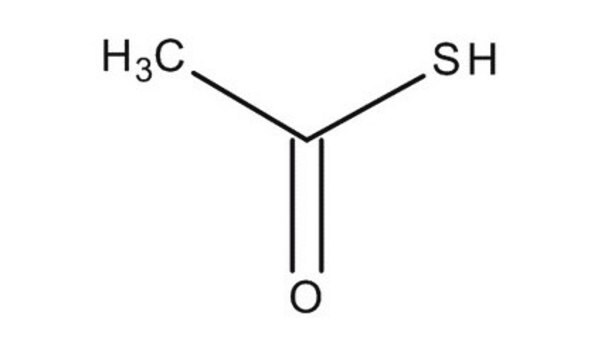251364
Ameisensäure
ACS reagent, ≥96.0%
About This Item
Empfohlene Produkte
Qualität
ACS reagent
Dampfdichte
1.6 (vs air)
Dampfdruck
44.8 mmHg ( 20 °C)
Beschreibung
dilution test passes test
Assay
≥96.0%
Selbstzündungstemp.
1004 °F
Expl.-Gr.
57 %
Verunreinigungen
≤0.4% Acetic acid
Abdampfrückstand
≤0.003%
Farbe
APHA: ≤15
Brechungsindex
n20/D 1.370 (lit.)
bp
100-101 °C (lit.)
mp (Schmelzpunkt)
8.2-8.4 °C (lit.)
Dichte
1.22 g/mL at 25 °C (lit.)
Anionenspuren
chloride (Cl-): ≤0.001%
sulfate (SO42-): ≤0.003%
sulfite (SO32-): passes test
Kationenspuren
Fe: ≤0.001%
NH4+: ≤0.005%
heavy metals (as Pb): ≤0.001%
SMILES String
OC=O
InChI
1S/CH2O2/c2-1-3/h1H,(H,2,3)
InChIKey
BDAGIHXWWSANSR-UHFFFAOYSA-N
Suchen Sie nach ähnlichen Produkten? Aufrufen Leitfaden zum Produktvergleich
Anwendung
Signalwort
Danger
H-Sätze
Gefahreneinstufungen
Acute Tox. 3 Inhalation - Acute Tox. 4 Oral - Eye Dam. 1 - Flam. Liq. 3 - Skin Corr. 1A
Zusätzliche Gefahrenhinweise
Lagerklassenschlüssel
3 - Flammable liquids
WGK
WGK 1
Flammpunkt (°F)
121.1 °F - closed cup
Flammpunkt (°C)
49.5 °C - closed cup
Hier finden Sie alle aktuellen Versionen:
Besitzen Sie dieses Produkt bereits?
In der Dokumentenbibliothek finden Sie die Dokumentation zu den Produkten, die Sie kürzlich erworben haben.
Unser Team von Wissenschaftlern verfügt über Erfahrung in allen Forschungsbereichen einschließlich Life Science, Materialwissenschaften, chemischer Synthese, Chromatographie, Analytik und vielen mehr..
Setzen Sie sich mit dem technischen Dienst in Verbindung.










